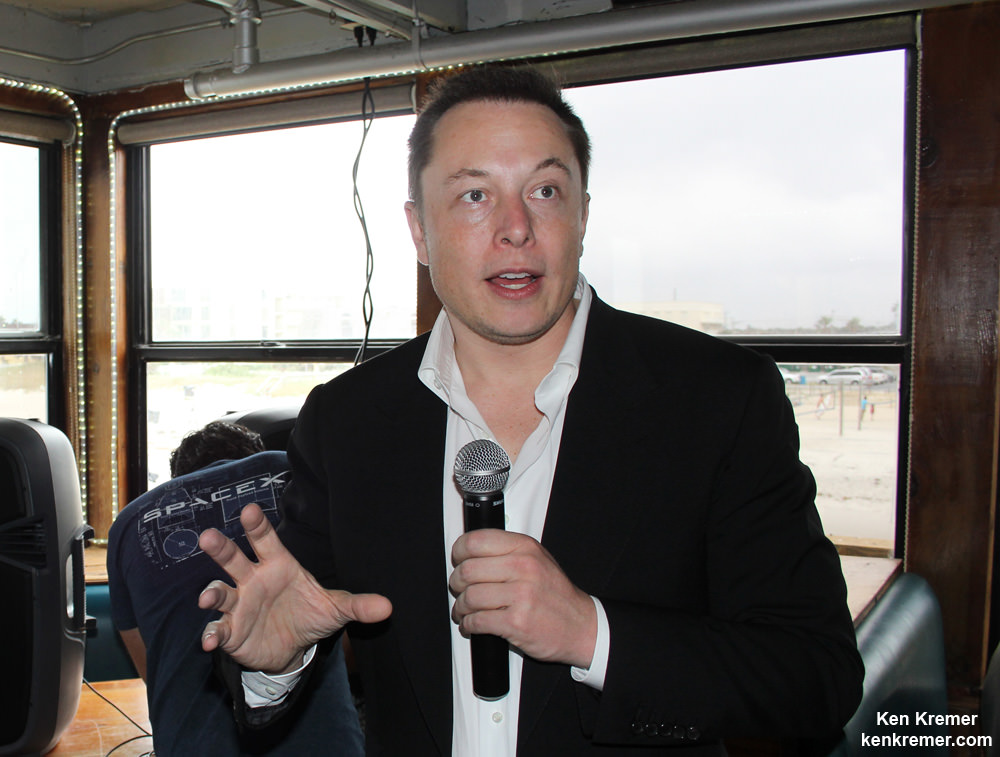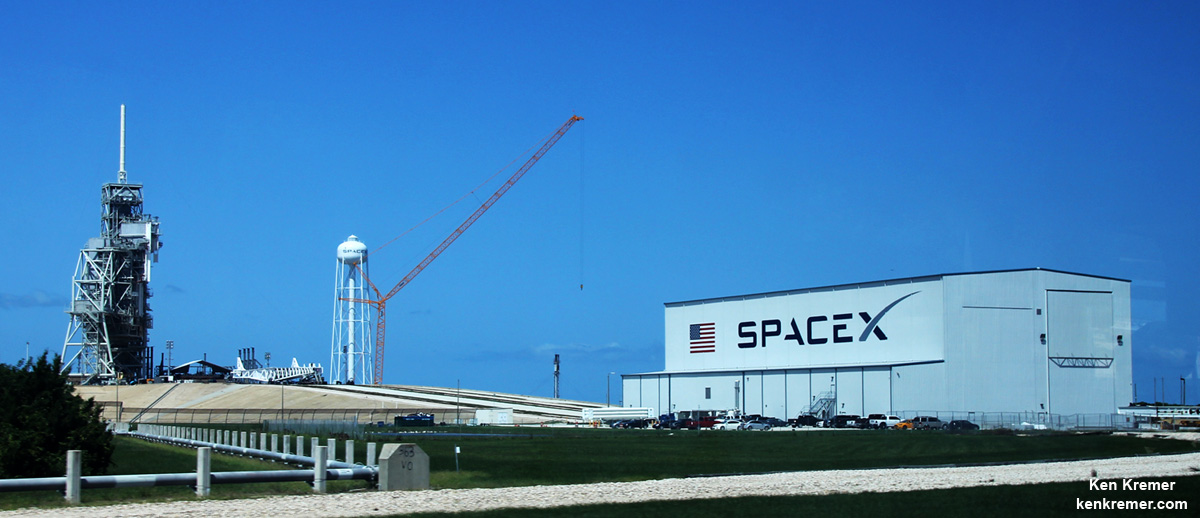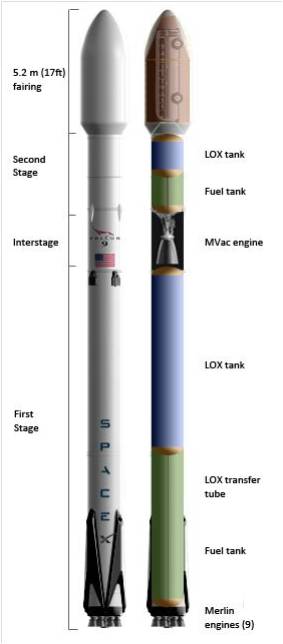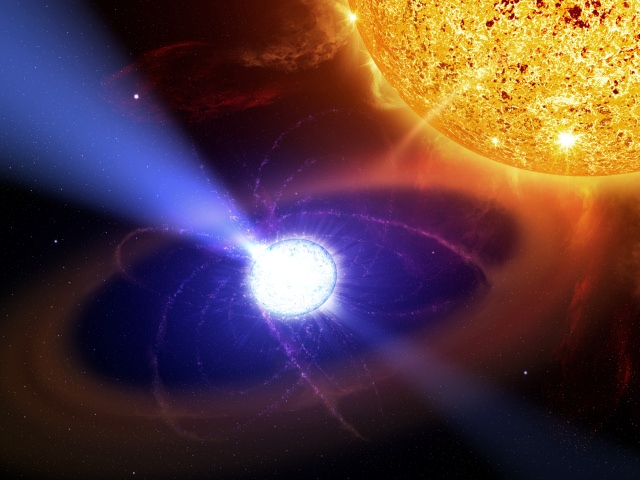
Hoping to recover quickly after suffering a calamitous launch pad explosion of their Falcon 9 rocket at Cape Canaveral some two months ago, SpaceX is aiming to resume launches of the booster in mid-December, said company founder and CEO Elon Musk in a recent televised interview on Nov. 4.
Musk further indicated in the Nov. 4 interview with CNBC that they have discovered the problem that suddenly triggered the catastrophic Falcon 9 launch pad explosion that suddenly destroyed the rocket and $200 million Israeli Amos-6 commercial payload during a routine fueling and planned static fire engine test on Sept. 1.
“I think we’ve gotten to the bottom of the problem,” Musk said. “It was a really surprising problem. It’s never been encountered before in the history of rocketry.”
Musk said the issue related to some type of interaction between the liquid helium bottles , carbon composites and solidification of the liquid oxygen propellant in the SpaceX Falcon 9 second stage.
“It basically involves a combination of liquid helium, advanced carbon fiber composites, and solid oxygen, Musk elaborated.
“Oxygen so cold that it enters the solid phase.”
“Turning out to be the most difficult and complex failure we have ever had in 14 years,” Musk previously tweeted on Sept. 9.
“It’s never happened before in history. So that’s why it took us awhile to sort it out,” Musk told CNBC on Nov. 4.

The explosion took place without warning as liquid oxygen and RP-1 propellants were being loaded into the second stage of the 229-foot-tall (70-meter) Falcon 9 during a routine fueling test and engine firing test at SpaceX’s Space Launch Complex-40 launch facility at approximately 9:07 a.m. EDT on Sept. 1 on Cape Canaveral Air Force Station, Fl.
But the rocket blew up during the fueling operations and the SpaceX launch team never even got to the point of igniting the first stage engines for the static fire test.
Launch of the AMOS-6 comsat from pad 40 had been scheduled to take place two days later.
In company updates posted to the SpaceX website on Sept. 23 and Oct 28, the company said the anomaly appears to be with a “large breach” in the cryogenic helium system of the second stage liquid oxygen tank – but that the root cause had not yet been determined.
“The root cause of the breach has not yet been confirmed, but attention has continued to narrow to one of the three composite overwrapped pressure vessels (COPVs) inside the LOX tank.”
“Through extensive testing in Texas, SpaceX has shown that it can re-create a COPV failure entirely through helium loading conditions.”
The helium loading is “mainly affected by the temperature and pressure of the helium being loaded.”
“This was the toughest puzzle to solve that we’ve ever had to solve,”Musk explained to CNBC.
After the Sept. 1 accident, SpaceX initiated a joint investigation to determine the root cause with the FAA, NASA, the US Air Force and industry experts who have been “working methodically through an extensive fault tree to investigate all plausible causes.”
“We have been working closely with NASA, and the FAA [Federal Aviation Administration] and our commercial customers to understand it,” says Musk.

Musk was not asked and did not say from which launch pad the Falcon 9 would launch or what the payload would be.
“It looks like we’re going to be back to launching around mid-December,” he replied.
SpaceX maintains launch pads on both the US East and West coasts.
“Pending the results of the investigation, we continue to work towards returning to flight before the end of the year. Our launch sites at Kennedy Space Center, Florida, and Vandenberg Air Force Base, California, remain on track to be operational in this timeframe,” SpaceX said on Oct 28.
At KSC launches will initially take place from pad 39A, the former shuttle pad that SpaceX has leased from NASA.
Pad 40 is out of action until extensive repairs and testing are completed.

The Sept. 1 calamity was the second Falcon 9 failure within 15 months time and will call into question the rockets overall reliability.
The first Falcon 9 failure involved a catastrophic mid air explosion in the second stage about two and a half minutes after liftoff, during the Dragon CRS-9 cargo resupply launch for NASA to the International Space Station on June 28, 2015 – and witnessed by this author.
Although both incidents involved the second stage, SpaceX maintains that they are unrelated – even as they continue seeking to determine the root cause.
SpaceX must determine the root cause before Falcon 9 launches are allowed to resume. Effective fixes must be identified and effective remedies must be verified and implemented.

Stay tuned here for Ken’s continuing Earth and Planetary science and human spaceflight news.

